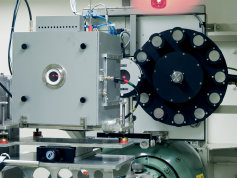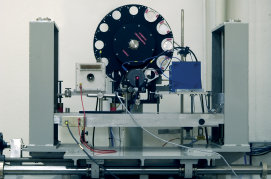Air Kerma
Realization of the unit of air kerma
The quantity “kerma” is the quotient of the sum of the initial kinetic energies of all charged particles, which are liberated in a material by indirectly ionizing radiation, and the mass of the material (“kinetic energy released per unit mass“). In case the material is air the term is “air kerma”. The unit of measurement of kerma is the Gray (Gy). (1 Gy = 1 J/kg)

The primary standards of the BEV for the realization of the unit of air kerma Ka are free air parallel plate ionization chambers and graphite cavity ionization chambers. The unit of the air kerma for X-rays in the energy range from 10 keV to 300 keV is realized by the free air parallel plate ionization chambers. The unit of the air kerma for the gamma radiation of the radionuclides 137Cs (photon energy: 662 keV) and 60Co (average photon energy: 1,25 MeV) is realized by the graphite cavity ionization chambers.
The secondary standards (working standards), which are used in our own laboratory, as well as the standard instruments of accredited calibration and verification bodies are calibrated with the primary standards.
The air kerma is the measurand for diagnostic dosimeters for as well for dosimeters for constancy tests in X-ray diagnostics. Diagnostic dosimeters are regarded as medical devices, dosimeters for constancy tests as radiation protection dosimeters. To which category a relevant dosimeter belongs, depends on its use.
Verification of diagnostic dosimeters

Diagnostic dosimeters are subject to mandatory verification in Austria. The first verification of a new measuring instrument is called initial verification. The verification of a not verified measuring instrument is called new verification. The verification during the period of validity of the verification is called subsequent verification.
Diagnostic dosimeters may be placed on the market or put into service for the first time only according to the regulations of the law on medical devices. The CE marking according to this law is equivalent to the initial verification.
The new and subsequent verification of diagnostic dosimeters are subject to national regulations and is carried out by accredited verification bodies, with the exception of mammography dosimeters.
The interval of subsequent verification for diagnostic dosimeters is 2 years.